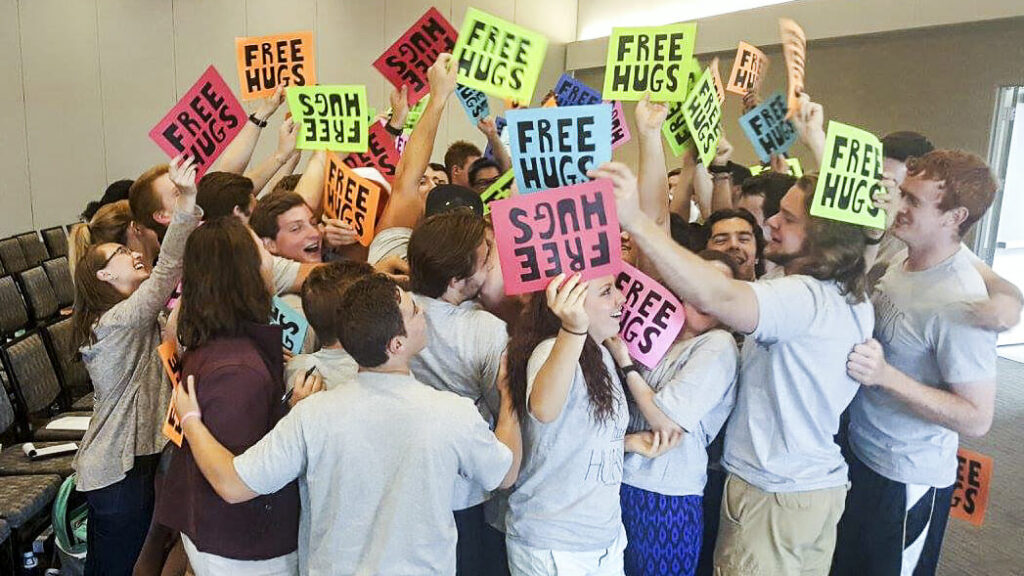Sylvia is the kind of person that wants to make a difference. When she sees an issue, she takes action. So when it was finals week at her university and she knew everyone was going to be stressed, she woke up early and drew the words “Free Hugs” on a large poster board. Then, she took the poster down to the main courtyard and held it up in hopes to cheer people up.
Sadly, the opposite happened. Instead of others getting happier, she got more depressed. Not only did she receive only a couple hugs, but a few people even made comments asking if she was okay or if she needed to talk to someone. They thought something was wrong with her because she was by herself handing out hugs.
You’ve probably heard the saying, “Two’s company and three’s a party.” But what about one? One person alone doing something different than the norm is often seen as negative.
Social Proof
When it comes to drumming up engagement within your community, three is the magic minimum number to get things going. If three people are doing something, each individual person is less likely to be seen as odd. Outsiders will now view the activity as an event, and not just one person acting outside the norm. Plus, with three people, you increase the chances that a stranger will participate. This is due to a phenomenon called Social Proof, which was discovered by famed psychologist Stanley Milgram.

In 1969, Milgram conducted a social experiment looking at the contagiousness of engagement and the idea of social proof. Wired magazine’s Jonah Lehrer accurately summarizes the experiment:
In this study, Milgram had “confederates” stop on a busy city street and look upwards at the sky. He demonstrated that when one person was looking up, 40 percent of passerby also looked up, just in case something interesting was happening. (There was nothing to look at, just sky and buildings.) When two people were looking up, 60 percent of passerby looked up. When there were three people, the percentage jumped to 65 percent, and, when there were four people, nearly 80 percent of strangers stopped and stared upwards.
Humans Like Being In Groups
Humans are social beings and for the most part we want to be a part of the group. Evolutionarily speaking for our ancestors, being away from the group in the jungle meant danger and probably death. Humans had strength in numbers. While we don’t have to worry about a tiger attacking us nowadays, our brains are still basically the same. We want to be part of the group.
If you’re going to host an event or activity with the goal of getting others to participate, don’t go it alone like Sylvia. Instead, recruit at least two other people to do it with you to create social proof. By doing so, you’ll not only increase the chances of successful engagement, you’ll also have more fun because you’ll be there with friends.